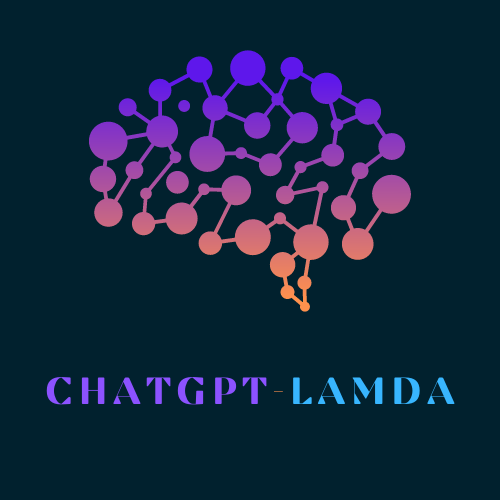With the advent of artificial intelligence and its foray into natural language processing, AutoGPT stands at the forefront of a revolution in text generation. This essay unveils the intricacies of AutoGPT’s architecture, a marvel of computational linguistics that blends a sophisticated neural network framework with advanced machine learning protocols. By dissecting the innovative mechanics that enable AutoGPT to mimic and produce text with human-like finesse, one gains insight into a technological tour de force that is reshaping the landscape of human-machine interaction.
Fundamentals of AutoGPT
The Inception of AutoGPT: Redefining Textual Creativity in Automation
As the field of automated text generation stands on the precipice of transformative advancement, the introduction of AutoGPT represents a significant stride forward. This technological innovation harnesses the prowess of generative pre-trained transformers (GPT) to craft text that bears a striking semblance to human-written content in its coherence, relevance, and fluidity.
AutoGPT builds upon the foundation of machine learning, where the crux lies within the models trained on vast corpus of text data. Through this diligent training, the algorithm learns to predict text sequences, fostering an understanding of language patterns and grammar observed in the training material. The AutoGPT’s pivotal improvement over its predecessors is its augmented efficiency and enhanced customization capabilities, enabling more nuanced and context-aware text output that closely mirrors natural human language.
The refinement in text generation facilitated by AutoGPT emerges from its deep learning neural networks, which comprise multiple layers capable of discerning complex relationships within the data. At the heart of this architecture is the ‘transformer’ model, a mechanism that efficiently processes sequences of words, allowing the model to generate text with a broader context in mind, rather than relying solely on adjacent words or phrases. This capability is profoundly influential in creating text that demonstrates continuity and thematic congruence over longer passages.
Furthermore, AutoGPT is versatile, underpinned by its ability to tailor its responses based on the input it receives. With fine-tuning, the system can adapt to various domains and styles of text, making it an ally in countless applications ranging from the composition of creative literature to the automation of customer service responses and data-driven journalism.
In educational settings, AutoGPT can serve as an invaluable tool for language learning and aiding students in written assignments. In the realm of communications, it can bolster the efficiency of creating drafts or generating reports by incorporating specific industry terminology and style into its output.
This leap forward in automated text generation not only amplifies the possibilities of machine-assisted writing but also catalyzes the exploration of the ethics of human-machine co-authored text. As such, an understanding of AutoGPT’s generative capacities is critical for harnessing its potential responsibly and creatively.
The advent of AutoGPT thus stands as a testament to the dedicated scientific inquiry and the relentless pursuit of innovation in artificial intelligence. Through continued research and development, this field strides into a future where the synergy between human cognition and algorithmic computation unfolds new horizons of textual expression.

Applications and Implications of AutoGPT
AutoGPT technology continues to reshape numerous industries by offering transformative solutions. Within the realm of customer service, AutoGPT-powered chatbots are revolutionizing interactions between companies and clients. These advanced systems provide immediate, efficient, and often indistinguishable-from-human customer support, mitigating the need for exhaustive human resources while enhancing customer satisfaction.
In the sector of software development, the contributions of AutoGPT are remarkable. The technology aids in the generation of code, providing suggestions to programmers and ensuring a more streamlined development process. This capability not only accelerates project timelines but also reduces the incidence of human error, thus elevating the overall quality of software products.
Moreover, the presence of AutoGPT technology in creative industries cannot be understated. For example, video game developers use AutoGPT to script complex, interactive dialogues for in-game characters. These narratives adjust in real-time, responding to player choices and contributing to immersive, personalized gaming experiences. The potential here for storytelling is expansive, pushing the boundaries of interactive narratives and character development.
In the health sector, AutoGPT is poised to play a crucial role in patient engagement and care. AI-driven systems that employ AutoGPT can interact with patients, providing educational material, answering queries, and guiding them through treatment processes. This represents a substantial leap forward in telehealth, offering patients personalized care even when healthcare professionals are not immediately available.
From a broader perspective, the implications of AutoGPT technology extend to the very fabric of global communication. The possibility of breaking language barriers in real-time with sophisticated language translation tools is closer to reality than ever. This could culminate in a more connected world, fostering understanding and collaboration across diverse linguistic and cultural landscapes.
Additionally, the contributions of AutoGPT to accessibility cannot be ignored. Individuals with disabilities can harness the technology to improve interaction with digital content. AutoGPT can generate descriptive text for visual media, aiding the visually impaired, or convert written information into spoken word, supporting those with reading difficulties.
In summary, beyond the specific applications, AutoGPT signifies a push toward a more adaptive, efficient, and inclusive world. As this technology matures, it is imperative to monitor and guide its integration into society, ensuring that the benefits are distributed equitably and ethically. The future appears bright with the promise that AutoGPT holds, a testament to the incredible advances in the field of artificial intelligence.

Future Trajectory and Development
The evolution of AutoGPT in the text generation landscape embodies the quintessence of interdisciplinary advancement. One anticipates considerable growth in the personalization and interactivity of systems harnessing AutoGPT. As its algorithms ingest voluminous dimensions of data, these frameworks will likely surpass current benchmarks in producing nuanced, context-aware text that is indistinguishable from that authored exclusively by humans.
Consider the field of personalized learning, where AutoGPT can tailor educational material to individual students’ needs. Adaptive learning platforms, supported by AutoGPT’s sophisticated understanding of context and user feedback, will be capable of crafting explanations, questions, and learning activities that align with a student’s unique pace and learning style. This personalization will inevitably lead to a more dynamic learning environment and has the potential to revolutionize the educational sphere.
In the realm of creative arts, AutoGPT is poised to evolve into a formidable collaborative tool. Aspiring writers and seasoned scribes alike could co-create with AutoGPT, exploring untrodden paths of storytelling and narrative structures. This synergy has the potential to spawn a new genre of literature, a coalescence of human creativity augmented by the comprehensive, data-driven insights of AutoGPT.
The ascendancy of interactive media could see AutoGPT at the helm, driving engaging experiences in virtual and augmented reality. By understanding and simulating human-like responses, AutoGPT could enable immersive environments that respond and adapt to user interactions in real-time. This could yield transformative shifts in the entertainment industry and beyond.
Further, expect AutoGPT to engender multi-faceted impacts on the social fabric. The emergence of platforms leveraging AutoGPT will provide unprecedented connectivity, bridging communities and cultures through advanced translation and localization techniques. This ubiquity of communication could contribute substantially to global understanding and collaboration.
Finally, the futurology of AutoGPT in democratizing content creation must not be understated. As these models become more adept at generating high-quality content, the bar for entry into the realms of journalism, literature, and media production lowers, thus flattening the traditional hierarchies that have gatekept these fields. Consequently, a more diverse chorus of voices will likely find a platform, enriching the global narrative with previously unheard perspectives.
The trajectory of AutoGPT will be dictated as much by algorithmic and computational advances as by the ethical frameworks and societal guidelines governing its deployment. The continued evolution of AutoGPT, if conscientiously stewarded, promises to reshape the landscape of text generation toward an ever more integrated, intelligent, and inclusive future. It remains imperative that the scholarly community actively participates in this evolution, ensuring that the synthesis of human intellect and artificial intelligence proceeds in alignment with the betterment of society as a whole.

The journey through the intricate world of AutoGPT illuminates a path towards a future rife with possibilities and challenges alike. As we stand on the precipice of a new era in natural language processing, the synthesis of AutoGPT with upcoming technologies beckons a transformative impact on society. While navigating the waters of ethical concerns and technological hurdles, the collective endeavor in advancing AutoGPT promises to not only enhance our digital interactions but also to redefine the very essence of human creativity and communication.




